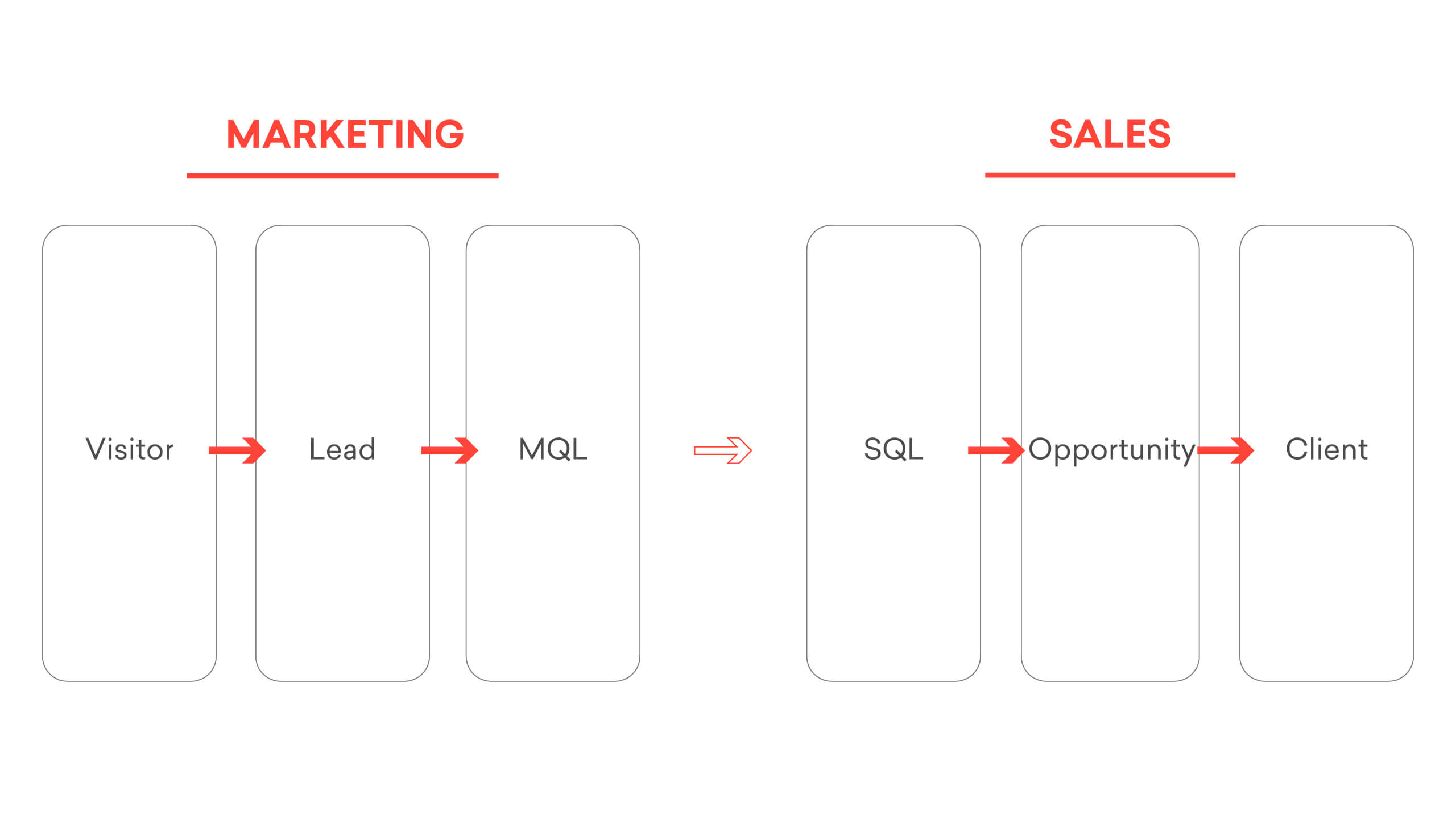
How to move MQL to SQL with lead scoring and lead nurturing


Is your business struggling to generate quality sales leads? If so, you’re not alone. Many businesses focus on short-term gains and don’t nurture their leads, which leads to missed opportunities and lost revenue.
If you’re unfamiliar with lead scoring and lead nurturing terminology, your business is probably falling victim to the same mistakes.
To keep your sales numbers up, you need to have a system for generating and developing strong leads. Read this article and learn about the different types of leads – MQLs and SQLs, and how to score them, create targeted campaigns, and measure your success.
With this information, you’ll be able to create a sales and marketing machine that will help your business reach new heights. Implement the strategies in this article and start generating the leads you need to take your business to the next level.
What are MQLs and SQLs in Inbound Marketing?
In today’s rapidly changing world, businesses need to keep up with the times and ditch the hard sell in favor of generating demand and creating memorable experience-based relationships with prospects.
If you’re looking to create experiences that consumers will love, inbound marketing is the way to go. With inbound marketing, businesses create valuable content that speaks to the needs of their target audience.
By understanding the buyer’s journey, you can create targeted content and campaigns that will move leads through the marketing and sales funnel and convert them into customers. MQL and SQL refer to two key moments in this process.

The MQL to SQL process is the journey that a lead takes from initial engagement to becoming a paying customer. By understanding this MQL to SQL conversion, you can improve your marketing and sales efforts to close more deals.
As the world of marketing becomes more complex, the terms MQL and SQL are becoming more commonplace. Therefore, it can be confusing sometimes, but let’s break it down and learn it in a straightforward way!
What is Marketing Qualified Lead (MQL)?
Marketing qualified leads (MQLs) are individuals who have been identified as having a higher likelihood of becoming customers. The criteria for an MQL can vary depending on the company and product, but typically includes factors such as the lead’s engagement with the brand, their level of interest, and their fit with the target customer profile.
Leads that do not meet the criteria for an MQL are considered unqualified and will not be passed to the sales team. However, they are still an important element of the marketing and sales funnel because they help you to qualify your leads. By knowing more about your leads – like how many times they visit your website – you can gauge their level of interest and see if they’re a good fit for your product or service.
Additionally, MQLs can help you to score your leads so you can prioritize them based on their potential value to your business.
What is Sales Qualified Lead (SQL)?
Sales qualified leads (SQLs) are potential customers who have been vetted by a sales team and are determined to be ready for the next stage in the sales process. To become an SQL, a lead must first meet certain criteria, such as having a higher level of engagement with your company.
Indicators that may contribute to a lead being classified as an SQL include indicating being at the decision-making stage of the buyer’s journey (e.g., filling out a form on your website or landing page, or sending a business inquiry for a service or product).
Once a lead becomes a sales-qualified lead, it is passed on to the sales team to begin the process of converting them into a paying customer. The sales team will then work to nurture the lead and close the deal.
MQL vs. SQL
The main difference between MQLs and SQLs is that MQLs are leads identified as having potential, while SQLs are qualified as being ready to buy.
The MQL vs. SQL debate is a chicken-and-egg situation because both teams need each other to function properly. Marketing needs sales to close deals, and sales need marketing to generate leads.
Although MQLs usually require more nurturing than SQLs, If you’re not sure whether a lead is an MQL or an SQL, err on the side of caution and treat them as an MQL. It’s better to nurture a lead and eventually turn it into an SQL than to lose a lead by treating it as an SQL too soon.
Lead scoring – How to Classify MQLs and SQLs in Inbound Marketing
Once you understand the different types of leads in Inbound marketing, it’s time to learn how to classify them so you can begin nurturing them with targeted content and offers. Leads can be classified in a number of ways. One of the most practical methods is to score them according to your lead scoring system. It can help you determine which leads are more likely to convert into customers and which ones need more nurturing.
What is Lead Scoring?
Lead scoring is a process of assigning a numeric score to a lead based on specific criteria that indicate how likely the lead is to convert into a customer. The higher the score, the more likely the lead will convert into a paying customer.
Lead scoring aims to provide a way to measure the quality of leads and allow marketing and sales teams to align their efforts better. By assigning scores to leads, businesses can better understand their customer base and therefore prioritize their outreach and focus their resources on the most promising prospects.
For example, a lead might get 1 point each time they visit your website, 5 points each time they fill out a contact form, and 10 points each time they download a white paper.
You should also take into account negative points when scoring leads. For instance, a lead might lose 10 points when unsubscribed from your newsletter list. The total score for each lead can help you prioritize which leads to follow up with first.

Important factors of Lead Scoring
There are several important factors to consider when developing a lead scoring system. The first is to identify what kind of leads the business is looking for. Once this has been established, businesses can begin to develop criteria for scoring leads. Some common lead scoring criteria include:
- Demographic information (e.g., location, age, gender)
- Interests (e.g., topics of interest, industry)
- Engagement (e.g., website interactions, email engagement)
- Sales readiness (e.g., budget, authority, need)
By taking the time to develop a comprehensive lead scoring system, businesses can ensure that they are targeting the right leads, generating more sales, and increasing their ROI.
However, targeting the right leads is only half the battle. Once you identify potential customers, you need to start developing relationships with them through the lead nurturing process.
Lead Nurturing – How to Move From MQL to SQL
The process of lead nurturing is designed to move prospects through the marketing and sales funnel, from initial awareness all the way through to becoming a customer. Nurturing takes time, but it’s worth it in the end because it allows you to build a relationship with your prospects, establish trust, and position yourself as a valuable resource.
By providing valuable information and guidance at each stage of the marketing and sales funnel, you can increase the likelihood that prospects will move through to the next stage and, ultimately, become loyal customers.
What is Lead Nurturing?
Lead nurturing is the process of building relationships with prospects over time, from first contact to purchase. By providing timely and relevant information – targeted to each stage of the buyer’s journey, you can help them move closer to a buying decision.
For example, if you sell software that helps businesses manage their finances, you could send your leads articles on financial planning, money management tips, etc. That content must be delivered at the right time, through the right channels, and in a way that’s personalized to the individual lead.
When it comes to lead nurturing, providing helpful information is key to staying top-of-mind and showing that you are an expert in your field. While the final purchase may be the end goal, the real purpose of lead nurturing is to build those long-term relationships that will keep your customers coming back again and again.
By investing in customers during the delightful phase – when they are actively using and enjoying your product or service – your business is more likely to see a return on the investment in the form of loyalty and continued business. So, if you want to ensure that your business thrives for years to come, investing in your customers’ happiness is a wise move.
7 Best Practices for Lead Nurturing

Although lead nurturing is widely recognized as an effective way to build relationships and move potential customers through the marketing and sales funnel, many businesses still struggle with making it work for them.
That’s why we’re here to help. These 7 best practices for lead nurturing will give you the foundation you need to start seeing success.
#1 Create targeted content
You can’t just create generic content and expect it to work for everyone. Your leads are individuals with their own unique needs and concerns. One of the best ways to nurture your leads is to get personal.
To nurture them effectively, you need to understand what motivates them. Once you know what drives them, you can create a content marketing strategy that’s tailored to their individual situation. This way, you can address their specific needs and help them move further down the marketing and sales funnel.
#2 Deliver content through multiple channels
If you’re still using basic lead nurturing strategies like sending out generic emails to a list of prospects, you’re missing out on some serious opportunities. So it’s time to step up your game and start thinking outside the box.
An effective lead nurturing strategy most commonly involves a combination of marketing automation, email marketing, social media, paid retargeting, dynamic website content, and direct sales outreach.
By utilizing a combination of these tactics, you can more effectively reach and engage your target audience, fostering better relationships that can lead to conversions down the line.
#3 Use a multi-touch approach.
The average person needs to see your marketing message ten times before they convert into a customer. That’s why the multiple touch point technique is such a powerful lead nurture strategy.
The multiple touch point technique involves reaching out to prospects at multiple touch points throughout their buyer’s journey. To execute it effectively, you’ll need to identify the touch points where your target audience will most likely be receptive to your message and how often they would like to receive it.
For example, if you know your audience likes getting information in small, digestible chunks, you might want to consider sending them a daily or weekly newsletter via email or via messaging app.
#4 Follow up with leads promptly
Lead follow-up is one of the most important steps in lead nurture strategy! By following up with leads, you can build loyal relationships by showing your willingness to put in extra effort to reach out and provide relevant information.
The important thing is to be consistent with your follow-ups. Depending on your business, you may want to follow up weekly, bi-weekly, or monthly. Make a schedule for following up with leads and stick to it – remember, lead nurturing is a long-term process!
#5 Use lead scoring tactics
If you’ve been paying attention, you already know that lead scoring is an excellent way to keep your leads moving forward. As we said before, lead scoring can save you time and money by helping you focus your efforts on the leads that are most likely to convert.
A well-conducted lead scoring model can help you stay ahead of changes in the market, so by no means should you skip it.
#6 Send personalized emails.
Personalized emails are still one of the best practices for lead nurturing! You can build a relationship with your leads and keep them engaged with your brand. The key to success is to make sure your emails are relevant to your recipients by segmenting your list and tailoring your content to each segment.
Don’t miss out on trying different subject lines, call to action, and email content to see what works best for your audience. This will help ensure that your emails are well written, therefore, you increase the chances for them to be opened and clicked on and that your leads are getting the most relevant information possible.
#7 Align your sales and marketing strategies
If your company’s sales and marketing strategies are not aligned, it can be difficult to create an effective lead nurture strategy. It is because each strategy may have different goals and objectives, which can lead to confusion for prospects and can ultimately result in lost sales.
But when the strategies go hand in hand, they can share information and resources that can help save time and money. Customers may perceive a company as more professional and trustworthy when they see the sales and marketing teams working together.
Looking for ways to drive growth and generate high-quality leads? Our e-book contains the answers you are searching for.
Conclusion
The bottom line is that if you want more leads and more MQL to SQL conversions, you need to start using lead scoring and nurturing. By taking the time to score and nurture your leads, you’ll be able to identify better which ones are ready to buy and which ones need a little more work, and how to most effectively nurture them down the funnel.
Lead nurturing is a long-term strategy, so don’t expect results overnight. It takes time to build trust and relationships with your leads. But by taking the time to understand and implement the lead nurture strategies we mentioned properly, you’ll eventually see the payoff in terms of a significant increase in highly qualified leads, loyal customers, and overall revenue.
If you’re ready to take your marketing to the next level, contact us today and see how we can help you stand out from the competition. We have a wealth of knowledge and resources that can help you navigate the world of marketing, so make sure you check out our other blog articles for more tips, tricks, and information. Also, don’t forget to sign up for our DeBrief newsletter to never feel like you’re missing out on the latest news!
We use cookies to personalize and optimize user experience. For more information, visit our Privacy Policy.
